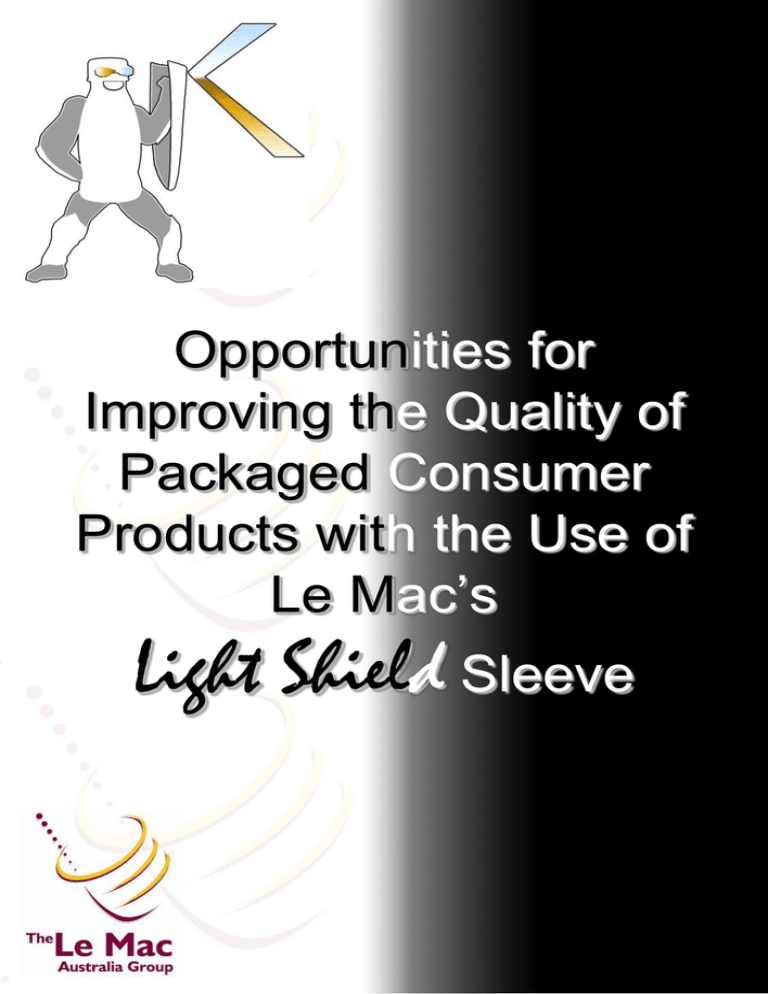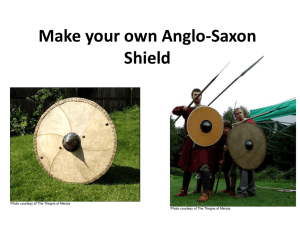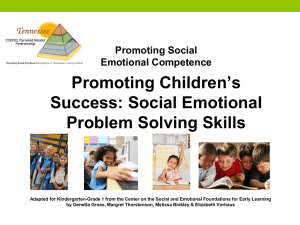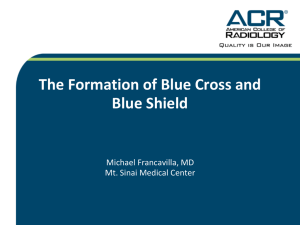Le Mac Light Shield Presentation - the Packaging Council of Australia
advertisement

Opportunities for Improving the Quality of Packaged Consumer Products with the Use of Le Mac’s Light Shield Sleeve 1 BACKGROUND In the consumer packaged goods industry, product development and packaging professionals face the continual challenge of developing optimal combinations of product formulations and package designs capable of delivering consistent value propositions to the intended consumer segment. Among the essential elements of any brand’s value proposition are the basic product features of colour, flavour or fragrance, and nutritional or functional value. Delivery on the promise of a brand requires that the consumer perceive these elements to be consistent, regardless of the place or time of consumption. Brand stewards recognise the value of ensuring that a product retains its desired benefits not only throughout its distribution and retail presentation but also during the expected post-purchase storage period and until the completion of consumption. Addressing the shelf-life issue is particularly challenging in today’s beverage industry, where many players are pursuing growth through the development of new products that create and cater to new consumption occasions. The result is strong growth in several categories including juices, energy drinks, vitamin-enhanced functional beverages, teas, and dairy beverages. 2 2 LIGHT SENSITIVITY OF CRITICAL PRODUCT INGREDIENTS Certain products packed in clear and translucent containers can be negatively affected by visible and ultraviolet light radiation Visible Light • Light present in the visible spectrum, ROY-G-BIV. • Classified as light with wavelength of 380 to 740 nm. • Does not cause direct damage to beverages. • Causes damage by affecting certain sensitizers present in beverages. Ultraviolet Light • Higher energy, shorter wavelength than visible light. • Classified as light with wavelength of 10 to 380 nm. • Higher energy causes more damage than visible light. • UV light present in sunlight causes sunburns. 3 3 LIGHT SENSITIVITY OF CRITICAL PRODUCT INGREDIENTS Sources of Visible & Ultraviolet Light: • Artificial Lighting – Refrigerated cases – Store shelves • Sunlight – During transport and distribution – Through shop windows – Incidental exposure after purchase 4 4 INGREDIENTS DAMAGED BY VISIBLE & UV LIGHT Many ingredients are independently unstable in the presence of UV. Others, however, show stability to UV in isolation but become unstable when formulated with other ingredients. 5 5 (1) UV Sensitivity of Colourant Ingredients Colour is a prominent and defining attribute of most consumer products. Consumers can readily observe slight inconsistencies in product colour and may perceive them as indications of poor quality. In the US, 7 synthetic dyes are approved for general food use and more than 30 are approved for general use in cosmetics. Although many of these dyes independently exhibit favourable stability to UV light, they have been shown to be unstable to light when formulated with certain ingredients. For example, ascorbic acid (vitamin C) is frequently added to beverages to scavenge dissolved oxygen that can attack certain flavour components. However, the presence of ascorbic acid in beverages containing certain synthetic colorants can result in rapid fading upon exposure to UV light. The presence of trace metals can also have a destabilizing effect on the synthetic colorants. The various natural colorants approved for general food use vary widely in their stability to light. Turmeric, beet, elderberry, annatto, and paprika extracts are most sensitive to light-induced degradation. 6 6 (2) UV Sensitivity of Flavour and Fragrance Ingredients Consumers are demanding greater variety and fusion of flavour elements in food and beverages. Similarly, in personal care and household cleaning products, fragrance ingredients can lead to a diminished sensory profile and also to the formation of unpleasant off-notes detectable by taste and smell at low concentrations. The most common example of this is the lemon aroma complex which is widely used across a range of products in beverages, food, and other consumer products. One of the significant contributors to lemon flavour, and also one of the most photosensitive, is “citral”. Upon exposure to UV light, citral degrades into several by products including “photocitral-A” and “photocitral-B”. Citrus beverages are often packaged in green bottles to protect against this but as tests conducted by Milliken Chemical show the formation of photocitral-A occurs rapidly in both clear and green PET bottles with the accompanying onset of detectable off-flavour. Milliken concluded protection against wavelengths up to at least 390 nm is required to retain the integrity of the citrus flavour package and this cannot be achieved with either green or standard clear PET bottles. 7 7 (3) UV Sensitivity of Vitamins and Nutrient Ingredients In recent years consumer demand has been driving the supplementary inclusion of many vitamins and nutrients in beverage, food, and personal care products as a means of delivering new and differentiated sets of benefits to targeted consumer segments. Vitamins and nutrients are generally sensitive to the effects of temperature, oxygen, and light. Slight change in the molecular structure of a nutrient can render it biologically ineffective. The following vitamins are known to be specifically vulnerable to degradation by UV light: Vitamin A, B2 (riboflavin), B6, B12, and folic acid. Light also accelerates the destructive interaction between vitamins. As an example, the degradation of both folic acid and vitamin C is accelerated by the combined presence of riboflavin and light. This effect, for example, is the cause of Vitamin C degradation in milk exposed to light. 8 8 (4) Specific Effects of Light On Milk When milk is exposed to light, the following are consequences: • Loss of vitamins • If flavoured, changes to flavour profiles • Protein oxidation (with resultant burnt flavour or burnt feathers flavour) • Lipid oxidation (with cardboard / metallic off flavour) Riboflavin (Vit B2) • Riboflavin is photosensitiser for protein and lipid oxidation • When milk is exposed to light in the presence of Riboflavin, off flavours develop. • If milk is not exposed to light, no off flavours develop • If Riboflavin is removed and the milk is exposed to light, no off flavours develop. Absorption Spectrum of Riboflavin Where Riboflavin absorbs light and causes problems. Options for protecting milk in non opaque containers. An opaque barrier, effective across the UV and Visible spectra up to 530 nm is necessary (this blocks all radiation which affects riboflavin). 9 To protect Vitamin C content, a barrier across the UV and visible spectrum is required. 9 THE LE MAC / FUJI SEAL SOLUTION Fuji Seal has developed the Light Shield Sleeve to reduce the negative effects of light radiation on packaged consumer products. The Light Shield material from Fuji Seal is an opaque PET which: • Can achieve top to toe bottle shielding on shapes requiring up to 60% sleeve shrinkage. • Being PET is recycle friendly. • Being opaque hides settlement levels and scum marks. • Being opaque is unaffected by the colour of the bottle contents. • Is a brilliant white for a vivid, visual impact and accentuates the printed design resulting in improved legibility especially for senior citizens. • Has zero MD shrink resulting in a low shrink force during the shrinking process which produces: No smiley faces A uniform shrink finish Makes the shrink process easy to control. 10 10 The Performance of Light Shield Can Be Measured by the Light Shield Factor (LSF). This defines the wavelength at which 5% or less radiation is transmitted through the sleeve. The Light Shield Factor (LSF) can be varied through the printing process: Eg. LSF 380 – Light Shield Sleeve providing <5% transmission @ 380nm LSF 500 – Light Shield Sleeve + printing providing <5% transmission @ 500nm LSF 800 - Light Shield Sleeve + printing providing <5% transmission @ 800nm Light Transmission Curve 11 11 From the Light Transmission graph above, the exceptional performance of Light Shield can be clearly seen: • Conventional transparent shrink sleeves transmit almost 20% of light radiation for wavelengths at 280nm and 90% at 420nm or above. It has an approximate LSF of 270nm ie <5% of light is transmitted @ 270nm. • If this conventional film is reverse printed with 2 layers of opaque white ink and one of silver the LSF rises to approximately 380nm ie <5% of light is transmitted @ 380nm. 30% is transmitted at 420mm increasing to almost 50% @ 800nm. • By contrast, Light Shield which also has a LSF of 380nm (<5% being transmitted up to 380nm) transmits only 25% of light @ 800nm. • If Light Shield is printed on the reverse side, the transmission percentage decreases depending on the colours chosen. In the case of black ink, the LSF is 800nm, ie less than 5% is transmitted @ 800nm. 12 12 THE EXPERIENCE IN JAPAN Since Light Shield was launched in Japan in 2004, the annual usage of Light Shield film has almost doubled to 150 tonnes. Applications in the Japanese market include dairy beverages, vitamin enriched functional beverages, fruit juices, iced tea, Japanese sake, condiments and cosmetics. Some examples are as follows: 13 13 14 14 15 15 16 16 17 17 18 18 19 19 20 20 21 21 22 22 THE EXPERIENCE IN NORTH AMERICA In 2007 Light Shield was adopted by Nestle, USA on its range of 300ml UHT flavoured milks filled in Mexico. This is the first use of Light Shield outside Japan. 23 23 Nestle’s requirement was many fold: 1. A maximum light transmission of 1% @ 800nm. 2. Extended shelf life to attain greater geographical reach for product distribution. 3. Reduced transportation cost. 4. Reduced overall packaging cost. 5. Meet Walmart’s directive for reduced in store packaging waste. The American Fuji Seal Solution 24 24 All these objectives were met: 1. An LSF of 800 nm with less than 1% light transmission was achieved with the use of a print enhanced Light Shield from American Fuji Seal. 2. This resulted in an extended product life (Data confidential to Nestle). 3. Nestle changed to a UHT product which could be distributed using non-refrigerated trucks resulting in reduced transportation costs. 4. Because of the extremely high LSF achieved with Light Shield, Nestle was able to change the secondary packaging for distribution from a full wrap-around carton to a half tray carton thereby significantly reducing secondary packaging costs. 5. The move to a half tray carton resulted in significant reduction of in-store waste at Walmart. 25 25 VALUE IMPLICATIONS OF Light Shield SLEEVES FOR BRAND OWNERS Specifying Light Shield sleeved bottles for qualified applications represents an opportunity for brand owners to realise value in several ways: • Light shield can contribute substantially to extending the shelf life of UV and visible light sensitive formulations, thereby increasing the likelihood of a consistent consumer experience, which in turn drives brand loyalty. • From a financial and risk perspective, Light Shield provides an element of protection for the extensive sums invested in product development, promotion, and brand development. The cost of utilising Light Shield translates into a small percentage of the retail price of the product. • Light Shield can give the product developer increased flexibility by relaxing constraints on the need to accomplish a UV-stable product through formulation alone. 26 26 VALUE IMPLICATIONS OF Light Shield SLEEVES FOR BRAND OWNERS •Light Shield can contribute to new product innovation allowing formulators to choose from among UVsensitive ingredients that previously were avoided. • Using Light Shield may alleviate the need to use stabilising compounds as direct additives to the formulation. •Light Shield reduces the need to “overshoot” loadings of UV-sensitive ingredient •Light Shield gives packaging designers increased flexibility in packaging aesthetics by utilising all the traditional benefits of shrink sleeve decoration. 27 27 CONTACT DETAILS The Le Mac Australia Group Cnr Railway Road North & Hudson Place MULGRAVE NSW 2756 Tel: Fax: 02 4577 4799 02 4577 4379 Email: salesenquiry@lemacaustralia.com.au Web: www.lemacaustralia.com.au 28 28






